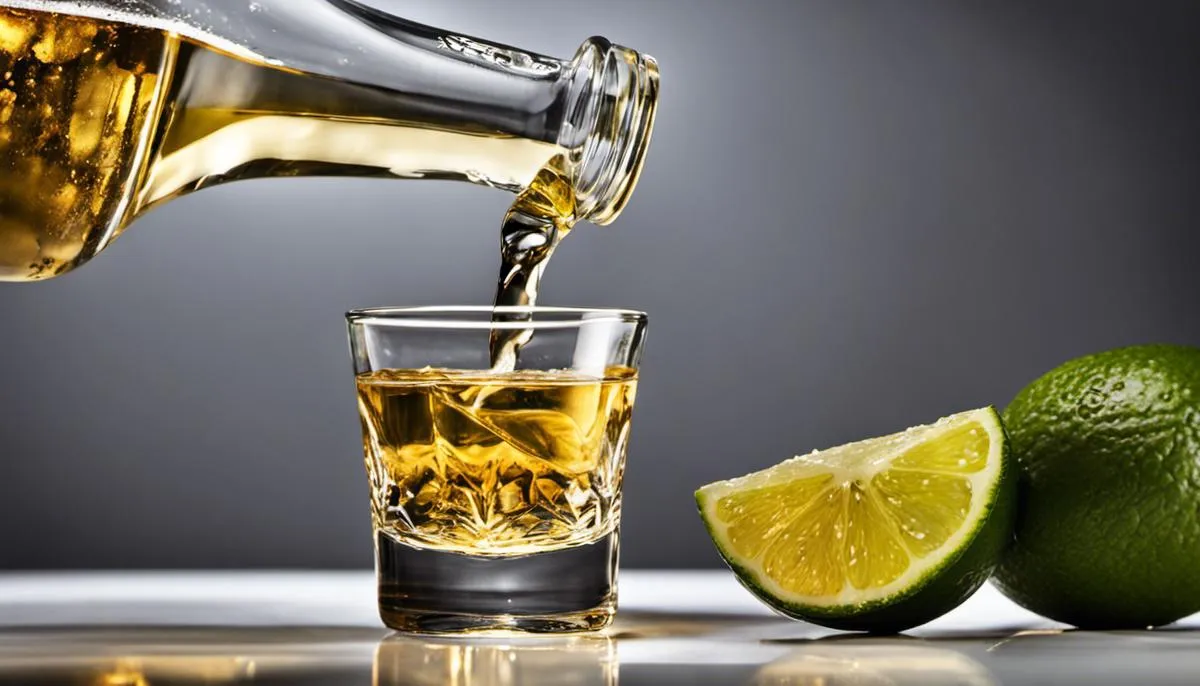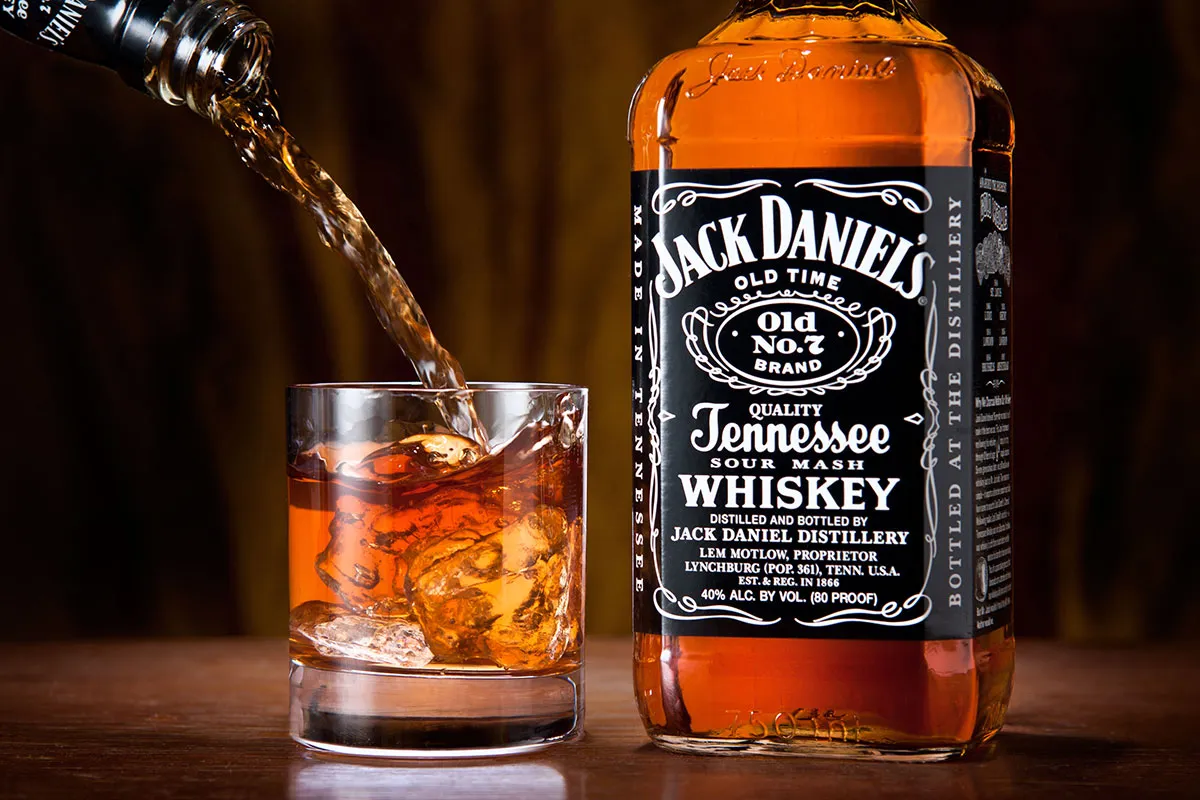Tequila, revered by many as not just a potent spirit but a versatile culinary tool, carries a history as rich as its flavor. Tequila’s unique essence enhances a myriad of dishes, rendering it a staple ingredient in numerous culinary endeavors across various cuisines. Our exploration delves beyond the liquor cabinet, venturing into the heart of the kitchen. We navigate from the fundamental understanding of tequila, its origin, production, and classification, all the way to its ingenuity in providing distinct taste profiles that amplify the flavor of dishes. It’s not just about spirited indulgence, but a seasoned journey through the lens of culinary techinques, assisting you to handpick the ideal tequila that suits your food and palate alike.
The Basics of Tequila
Tequila, a distilled beverage from Mexico
Tequila, a distilled beverage from Mexico, is deeply rooted in cultural history and tradition. It is made using the blue agave plant, primarily in the area surrounding the city of Tequila, 65 km (40 mi) northwest of Guadalajara, and in the Jaliscan Highlands of central western Mexico. The rich volcanic soil in these regions is ideally suited for the cultivation of the blue agave.
The production of tequila
The production of tequila involves multiple steps that begin with the growth and harvest of the plant. The blue agave plant takes between 8 to 12 years to fully mature and during this time, it is carefully tended by jimadores, experienced field laborers who ensure the plants are healthy and properly grown. Once matured, the agave is harvested, its leaves removed to reveal the core or “piña”, which resembles a large pineapple after trimming, hence the name.
The cooking process
Next is the cooking process. The piñas are chopped into smaller parts and then slowly baked in traditional stone ovens or more modern stainless steel autoclaves. This roasting caramelizes the agave’s natural sugars, essential for the fermentation process that follows. Once cooked, the agave pieces are crushed to extract the sweet juice, known as aguamiel, which is then fermented by adding yeast in large wooden tanks or stainless steel vats. The yeast consumes the sugars and results in a wort, or mosto, with a low alcohol content. This wort is then distilled twice to increase the alcohol concentration and remove impurities.
Knowing the variations of tequila
Knowing the variations of tequila is also crucial. Tequila comes in several types: blanco or silver, joven or gold, reposado, and añejo. Blanco, also called plata, silver, or white tequila, is unaged and bottled immediately after distillation. Joven or gold tequila is usually a mix of blanco tequila and reposado. Reposado tequila is aged in wood barrels for 2 months to a year, which gives it a mellow oak flavor. Añejo, or old tequila, is aged for one to three years in small oak barrels to develop a complex flavor.
Comparatively, silver tequila
Comparatively, silver tequila tends to be brighter and a bit harsher. Reposado and Añejo tequila are more suited for sipping due to their smoothness and complex flavor, although they can also be used in cooking. When choosing tequila for recipes, it’s typically best to stick with Blanco or Reposado.
Culinary Adventures with Tequila
Tequila is gaining renown as a versatile and exciting element in a variety of recipes. Its unique flavor can elevate many traditional dishes, contributing an unexpected edge to meats, desserts, or sauces. Different types of tequilas, aged for varying periods, can gift dishes with distinct flavor notes. Think tangy chicken marinades, fiery chipotle sauces, or decadent tequila-laced chocolates. Now imagine the possibilities! Whether you’re experimenting in the kitchen as a beginner or a seasoned professional, understanding the basics of tequila can truly transform your culinary creations.
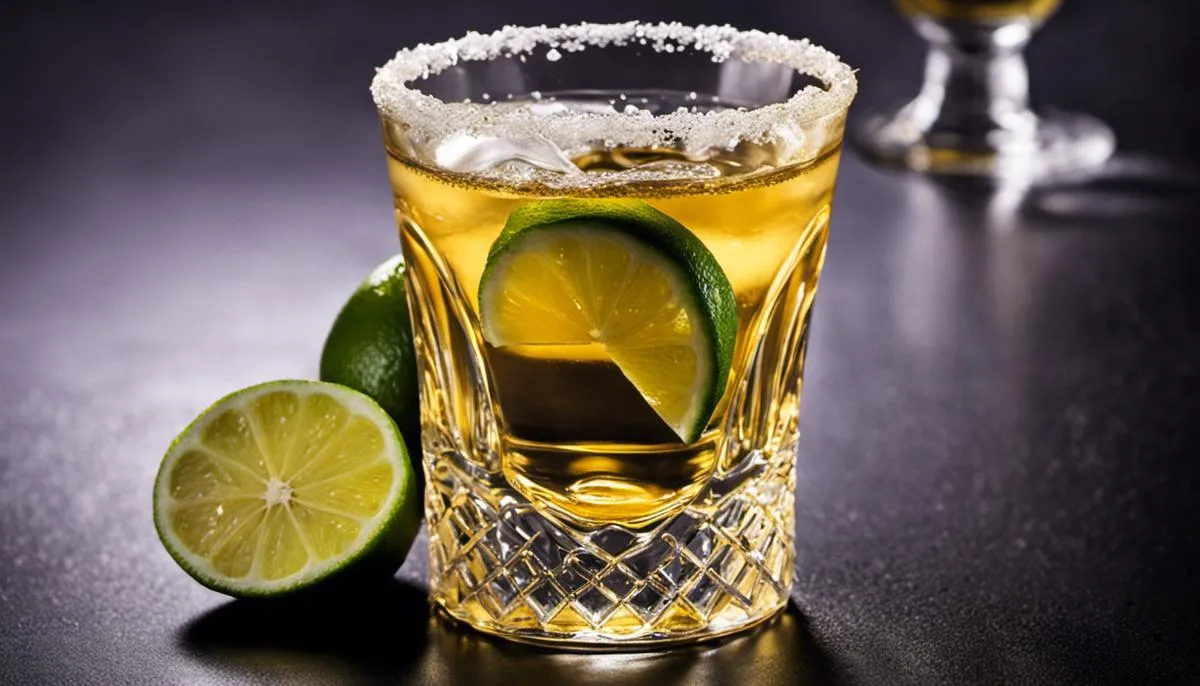
Tequila and Flavor Profiles
Exploring the Diverse Profiles of Tequila
While they’re all tequilas, not all share the same characteristics or flavor profiles. To thoroughly understand the impact of tequila in cooking, it’s essential to grasp the differences among its four major types: Blanco, Reposado, Anejo, and Extra-Anejo.
Blanco tequila, also referred to as Silver or Plata tequila, is crystal clear and unaged, embodying the raw, vibrant flavors of the agave plant. This variety offers a bright, peppery flavor tinted with subtle sweetness, making it a potent addition to dishes that could gain from a punch of bold agave essence.
Reposado translates to “rested”, a fitting label for tequila that has aged for anywhere between two months to one year in oak barrels. This resting phase introduces greater complexity and smoother character to the tequila. Reposados carry pleasing notes of caramel, oak, and occasional hints of smoke, making them the go-to for marinades and sauces where a depth of flavor is desired, without overwhelming the original taste of the dish.
Then come the Anejo and Extra-Anejo varieties, distinguished by their longer aging periods. Anejos age from one to three years, whereas Extra-Anejos age more than three years. Deep and flavorful, they’re colored dark, with a smoother complex flavor profile suggestive of chocolate, vanilla or tobacco. These are best showcased in dishes that can carry and amplify their nuances – bananas Foster, meat glazes, or slow-cooked meals are perfect examples.
Cooking with Tequila
In the culinary world, tequila is used not so much for its alcohol content, but for its unique flavor. As a marinade, tequila can act as a tenderizer for meats, breaking down tough muscle fibers due to its acidity while enhancing the meat’s flavor.
Furthermore, the earthy, slightly sweet flavor of tequila pairs wonderfully with many ingredients. For instance, citrus fruits, chili peppers, and tropical fruits like pineapple and mango benefit from tequila’s flavor profile. Tequila can bring an interesting twist to salsas, ceviches, and even seafood grills.
Lastly, tequila in desserts can provide a unique and refreshing finish to a meal. Tequila-infused ice creams, tequila-lime cheesecakes, and tequila-chocolate sauces exemplify this spirit’s versatility in sweet dishes.
Remember, when cooking with any alcohol, it’s important to cook it thoroughly to allow the majority of the alcohol to evaporate. This leaves behind the flavor without the strong alcohol content. Also, as with wine, it’s a good rule of thumb to only cook with a tequila you would enjoy drinking—this ensures a high-quality and enjoyable flavor in your dish.
Remember, when utilizing tequila in your cooking, the focus should be on enhancing and augmenting the flavors of the dish rather than overwhelming them. Tequila brings an interesting, complex flavor profile which sometimes can be an unexpected delight in food. Experimentation is always key—don’t be afraid to try different tequilas with different dishes to discover new and exciting combinations.
Safety when Cooking with Tequila
It is also important to note the safety aspects when cooking with alcohol such as tequila. Always remove the pan from the heat source before adding the alcohol to prevent it from igniting. Furthermore, be mindful that not all the alcohol may be cooked out, especially in quick-cooking dishes. While the alcohol content will reduce significantly, small traces may remain, so this is an important consideration when serving individuals who avoid alcohol for personal, dietary, or health reasons.
Delving into the world of culinary arts, you’ll find that tequila isn’t just for margaritas; it’s a versatile ingredient that can elevate your dishes to another level. Grasping its diverse flavor nuances can empower you to bring a spark of Mexican gastronomic heritage into your kitchen, enriching your meals in unique and delightful ways.
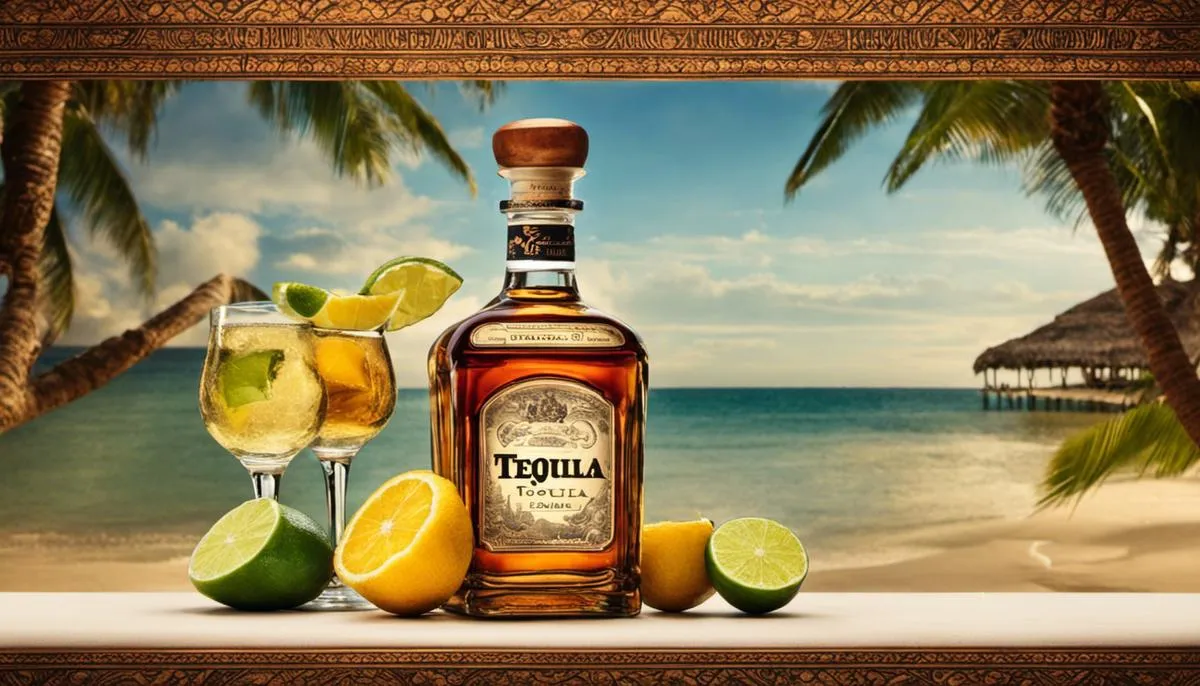
Popular Tequila-Infused Dishes
Tequila’s Role in Mexican Cuisine
In the realm of authentic Mexican cuisine, tequila frequently holds a cornerstone position, being used to amplify flavors and bring complexity to dishes. For example, meats bathed in a tequila-based marinade experience a tenderizing effect and gain a subtle note of citrus. A prime illustration of this is Tequila Lime Chicken, a beloved staple prepared by marinating chicken in tequila, lime, and various aromatic spices prior to grilling. The alcohol content of tequila acts as a catalyst to soften the meat fibers, yielding chicken that’s tender and juicy. Simultaneously, the essence of agave in tequila permeates the dish, imparting a unique aroma that’s characteristic of traditional Mexican delicacies.
Tequila in Fusion Cuisine
In the realm of fusion cuisine, tequila is a crucial element in several innovative dishes. For instance, chili con carne, a classic American recipe with Mexican roots, can also be enhanced with the addition of tequila. In such a dish, tequila would bring out the mild sweetness in the tomatoes while balancing and accentuating the overall spiciness. Another example is Tequila Infused Shrimp. Here, the tequila, alongside jalapenos and garlic, is used to marinate the shrimp before grilling, yielding a sweet, spicy, and slightly smoky flavor.
Tequila in Desserts
Tequila is not just for savory dishes; it also finds its use in desserts. Margarita cupcakes are a delightful treat that incorporate tequila both in the cake and the frosting. Served with a sprinkle of sea salt and lime zest, these cupcakes offer a balanced and unusual combination of sweet, tangy, and slightly boozy flavors. Another dessert recipe where tequila steals the show, is Tequila-infused dark chocolate truffles. These truffles with their rich, chocolaty goodness and slight tequila kick, make them an adult-only favorite.
Factors to Consider
When cooking with tequila, it’s important to note that it should be used sparingly. Too much can overpower a dish, making it taste more like a cocktail than a meal. The kind of tequila used also matters. Using ‘gold’ tequila might lend a semi-sweet flavor to the dishes, whereas ‘silver’ or ‘blanco’ tequila might deliver a clean and crisp flavor with faint hints of agave.
The Culinary Role of Tequila
Tequila brings a distinctive depth and complexity to your dishes, acting as a potent flavor enhancer. Harvested from the sweet blue agave plant, tequila infuses any cooking with notes of sweetness, aligning extremely well with spicy foods. Its use in marinades enables it to break down proteins, allowing flavor absorption into your meat. This wonder spirit doesn’t stop at savory dishes, however; it can create a flavor balance in desserts by providing a pleasing contrast to sweet elements.

Cooking Techniques with Tequila
Delving into Tequila types
It’s imperative to understand that tequila consists of a distilled spirit crafted from the blue agave plant, a fact that makes it a cornerstone of Mexican cuisine and a key ingredient in many cocktails. Tequila originates from the area closest to the city of Tequila, Mexico, and comes in four different grades depending on aging: blanco (unaged), reposado (aged for 2-12 months), anejo (aged for 1-3 years), and extra anejo (aged for over 3 years). Each type of tequila brings its unique flavor profile to enhance your cooking.
Choosing Tequila for Cooking
When choosing tequila for cooking, generally, tequila blanco is chosen due to its strong agave flavors, and slightly peppery and citrus notes that can contribute to the dish’s flavor profile. However, some dishes might fare better with the smooth and subtle flavors of reposado, or the caramel and woody notes of an anejo and extra-anejo.How Much Tequila To Use
The amount of tequila to use in cooking largely depends on the dish being prepared. It’s crucial to be cautious and not overpower other ingredients. Start with a small amount – a tablespoon or two for sauces or marinades or a quarter to half a cup in soups or stews that serve 4-6. For dishes that prominently feature tequila, such as a tequila-lime chicken, you might use up to a cup.When to Add Tequila During Cooking
Typically, tequila is added to the dish during the cooking process to allow the alcohol to cook off, leaving only the flavors behind. In marinades, tequila should be mixed with other components and the protein should be soaked as directed in the recipe. For sauces, stews or soups, tequila is often added along with the stock or broth. For dishes that are flambéed with tequila, the alcohol is added at the end of the cooking process.Sautéing and Flambéing with Tequila
In sautéing, tequila can be used to while cooking the proteins or veggies to incorporate its flavor. For flambéing, the tequila should be heated shortly, then set alight to burn and evaporate the alcohol, leaving only the flavorful compounds behind.Marinating with Tequila
Tequila can be used in marinades as its acidic nature helps to tenderize meat while also imparting flavor. Usually, it’s combined with ingredients like citrus juice, herbs, and spices.Deglazing with Tequila
Tequila is a great deglazing liquid. After sautéing meat or vegetables, tequila can be added to the hot pan to loosen and dissolve the brown bits. This results in a flavorful base for sauces or gravy.Safety Considerations when Cooking with Tequila
When using tequila or any form of alcohol in cooking, it’s crucial to be cautious about the safety measures to prevent accidents. If you’re using a stovetop or any open flame, always transfer the tequila into a separate dish before adding it to a hot pan. Keep away from pouring it directly from the bottle, as it can catch fire and possibly result in harm. Besides safety, flavor harmony of your dish is another aspect to be aware of. Remember to carefully measure the amount of tequila, as its prevalent taste can easily dominate over other ingredients. Lastly, remember that not all the alcohol content evaporates during cooking, making dishes with tequila unsuitable for people opting to abstain from alcohol.
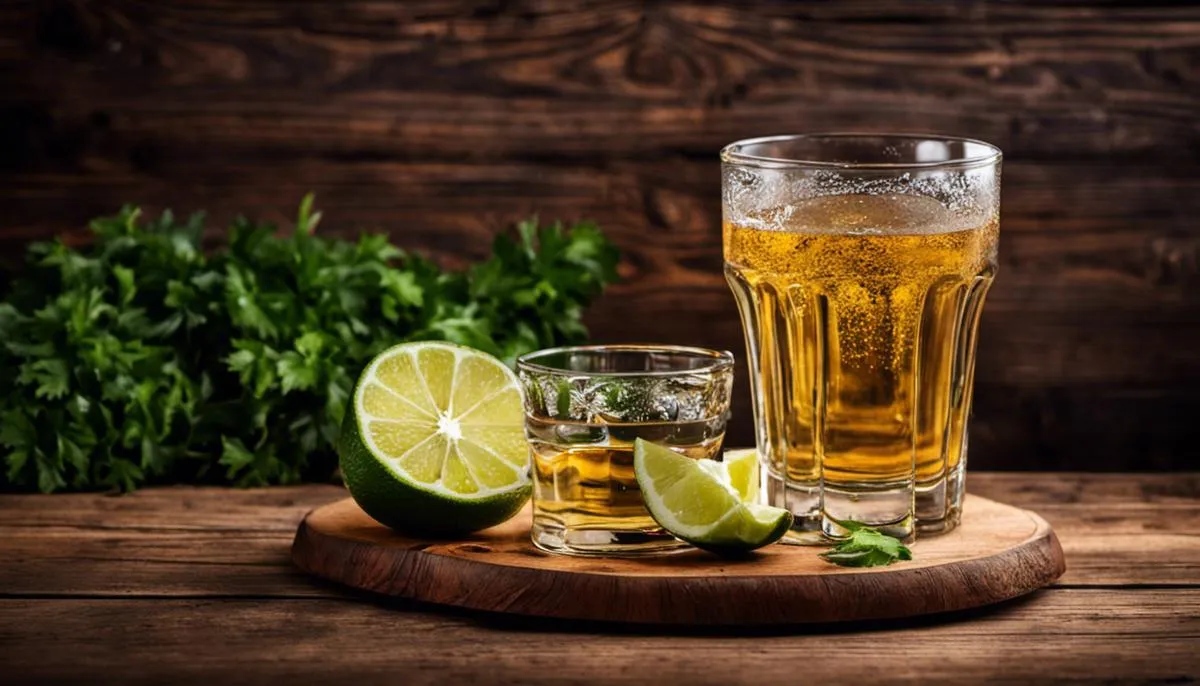
Selecting the Right Tequila for Cooking
Selecting a Suitable Tequila for Cooking
When incorporating tequila into your culinary creations, the choice of tequila is a crucial aspect to consider. Discerning between sipping and mixing tequila can significantly impact the final flavor of your dish. The delicate notes of a fine-quality sipping tequila, such as vanilla, caramel, and oak, arise due to its aging process and are ideal for enjoying as is. The delicate flavors, which come from being prepared from 100% blue agave plant, might get subdued if mixed with other ingredients in a dish.
On the other hand, a robust, unaged mixing tequila or mixto, with a blend of 51% agave tequila and 49% cane sugars, stands up well to heating and can truly infuse your dish with the distinctive flavor of tequila. Plus, mixing tequilas tend to be more economical than their sipping counterparts, making them a pragmatic choice for cooking.
Pairing Tequila with Foods
Pairing the correct tequila with appropriate food can enhance both the dish and the spirit’s flavors. Lighter blanco or silver tequilas are versatile and pair well with a variety of dishes, especially seafood and chicken dishes, or in citrus-heavy marinades and dressings. These tequilas often hold a fresh, crisp agave flavor that compliments lighter ingredients.
Aged Tequilas- Reposado and Anejo have stronger, richer flavors and often feature notes of oak, caramel, and vanilla from their time spent in barrels. They work well when cooking meaty dishes like pork, beef, or different types of hearty, spice-laden meals. They’re also excellent for rich, decadent desserts, where their complex flavors can truly shine.
However, it’s worthwhile noting that when pairing and cooking with tequila, the spirit should enhance and intertwine with the ingredients, not overpower them. The key lies in practice and altering the amount of tequila added in the recipe to achieve the desired flavors.
Understanding Tequila Types for Cooking
Recognizing the different types of tequila can go a long way in enhancing your cooking processes. Blanco or silver tequilas are unaged and hold a clean, agave flavor perfect for lighter dishes. Reposado, or “rested” tequilas, matured in oak barrels for two months to a year, are slightly more complex and stand up well to being cooked. Añejo tequilas are aged between one to three years, boasting rich and sophisticated flavors ideal for meaty and spicy dishes.
The key to using tequila in cooking effectively lies in choosing the correct type for various dishes and being careful not to overpower the ingredients. A well-executed tequila-based dish will allow the unique characteristics of tequila to shine through while complementing the food’s flavors.
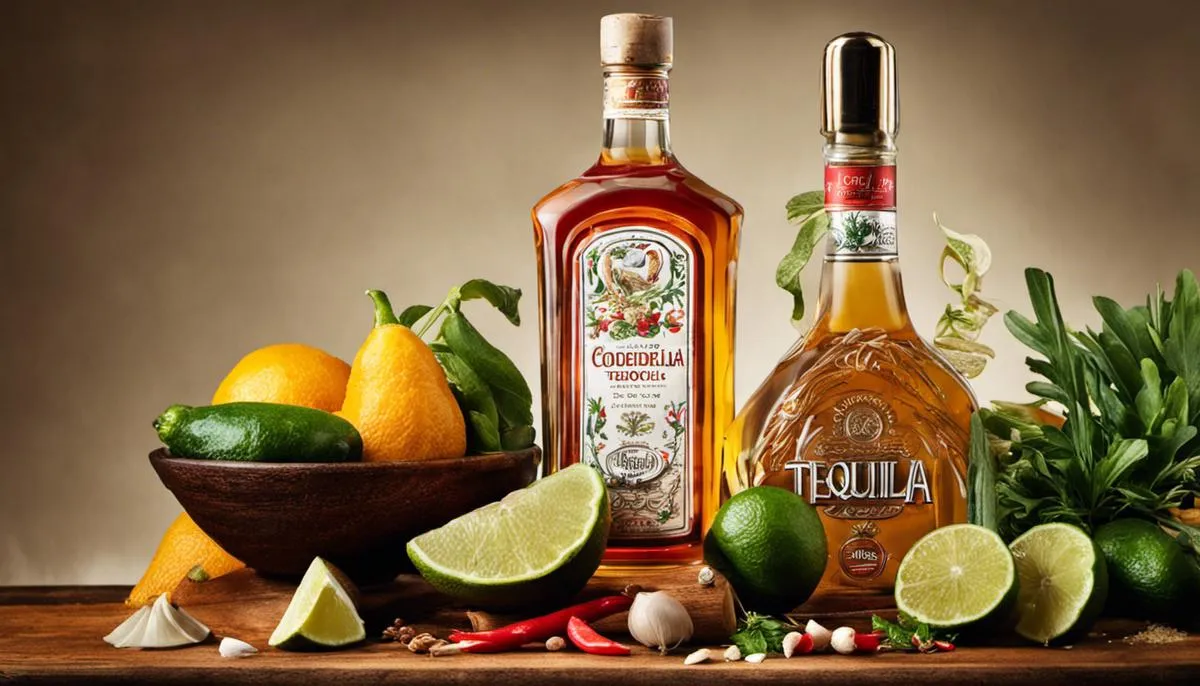
Having journeyed through the realm of tequila in the culinary world, we have developed an understanding of its historical roots, the nuances of its production, and the subtleties that make each type distinct. From highlighting the flavors profiles tequila introduces to dishes, enlightening us on a number of popular tequila-infused dishes across cuisines, to guidance on cooking techniques—it’s clear tequila offers an enriching culinary palette. Whether a high-quality sipping tequila or a standard mixing one, choosing the right variant plays a significant part in accentuating dishes. Hence, tequila, loved globally as a spirit, rightfully claims its place as an inspiring and delectable ingredient in cooking, offering a striking balance between tradition and innovation.

